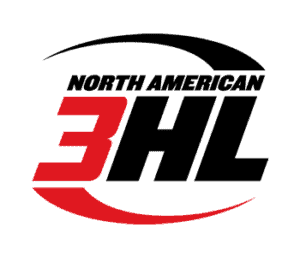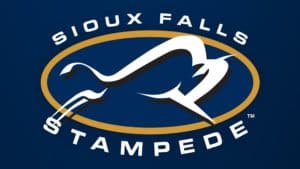Last Wednesday’s opinion piece, ‘Too much Junior Hockey – Fact or Fiction?‘ somewhat rejected the myth that the current state of Junior hockey is oversaturated, with too many teams, based upon comparison to historical data. Whether or not Junior hockey is operating at its most efficient overall number is another topic altogether, and it’s so subjective that data cannot support either side of the debate.
From the outset of this op-ed, I want to be clear that last Wednesday only proved that there is less Junior hockey, per capita than the previous 15-20 years.
This is also – absolutely — not a Tier III-specific discussion.
It’s safe to say that any tuition-free team will always fill its roster regardless of how many Tier III teams try to get off the ground, therefore it’s logical to say tuition-free teams have an effect on the number of available Tier III players. The tuition-free Junior teams will likely affect the 18U and 16U divisions of youth hockey more than Tier III, but there is still a Tier III effect.
It’s easy to argue that having everyone on the same page – meaning USA Hockey, tuition-free leagues, and tuition-free organizations – in a smaller, committed development model could lead to better top-end players. It’s just not necessarily a reality. Capitalism keeps the tuition-free model relatively small on its own because of the simple fact it’s expensive to run a tuition-free team.
Getting back to the discussion about the number of Tier III teams, the increase of tuition-free roster spots from 2018-19 (-1 USHL, +2 NAHL, and +1 NCDC = +2 Teams/46 roster spots). That means the Tier III structure, which we showed was break-even compared to last year in terms of the number of teams, will likely struggle at the lower levels despite lack of expansion. Common sense would dictate this would be felt most by the leagues at the lower level of the competitive structure and by the teams that operate poorly.
However, it appears the rumors of teams folding and the dire predictions of seasons not getting off the ground are unfounded to this point, which is directly related to how proficient some Tier III organizations and coaches have gotten at procuring pay-to-play customers.
Chris Cerrella, the current head coach and general manager for the New Hampshire Avalanche of the Eastern Hockey League (EHL), is a 15-year veteran of the Tier III business having previous stops with the Walpole Express of the old Atlantic Junior Hockey League (AJHL) and the Hartford Junior Wolfpack of the AJHL and the EHL. Every year he has recruited and contracted two full rosters of Junior players – full meaning 25, not 18 or 19.
“We’re usually at about 30 (players) for our top team and somewhere around 17 or 18 for our second team by Labor Day,” said Cerrella, who sorts out the final roster assignments after training camp. “I would be concerned about my roster if numbers were lower than that by September 1. You’re not guaranteed you could pick up additional players this late.”
Compare that to 10-15 years ago when you could hang a shingle outside the rink for tryouts and emerge from a tryout camp with 25 signed players per team, and you can see how the competition for the college-bound player has increased.
At this point, it’s hard to examine all the rosters in the U.S. Junior hockey scene because some teams don’t start for three more weeks, and there is always the USHL and NAHL roster cutdowns later in September. But suffice it to say, according to Cerrella, if your roster is not full by end of September you should hope and pray for an injury-free and drama-free season where all the players stick with the program.
I can attest that even with 25-man rosters my Junior B team played with as few as 13 skaters more than once during January or February when the flu bug, injuries, and personal issues arose. Having only 20 players on a Junior roster, with no source for replacement players, can be a good recipe for a bad experience. Problems happen every year with every team and they result in reduced manpower.
So how do the successful operators manage to fill their rosters every year? They never quit the recruiting process. “I bring players in for practice during the season, in anticipation of next season,” said Cerrella. “I get an early start on (recruiting) so I’m not in the summer chase for players with everyone who hasn’t been working at it. Some teams (wait until summer to start recruiting) on purpose because they think they’re going to have a kid from a higher-level team fall in their lap, which can work sometimes. But it’s no guarantee and can be risky.”
The jury is still out on whether all the current Tier III teams get off the ground and manage to make it through the season, but so far even the teams about whom we received anonymous tips about roster problems have managed to put together squads and play games.
Stay tuned to TJHP as we’ll cover any developments about the status of teams, otherwise enjoy the start of another hockey season.











